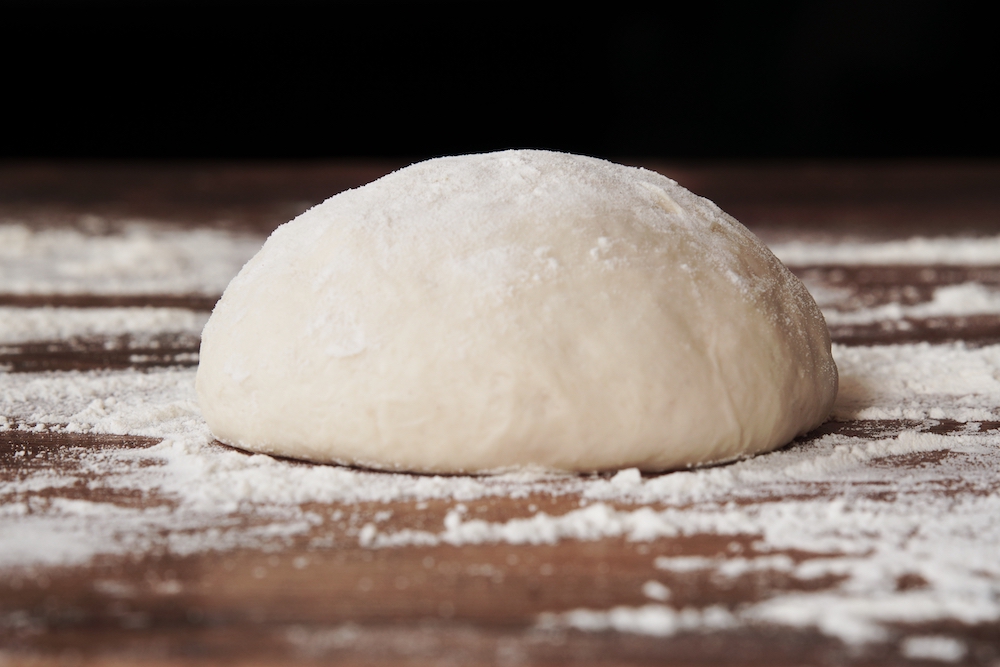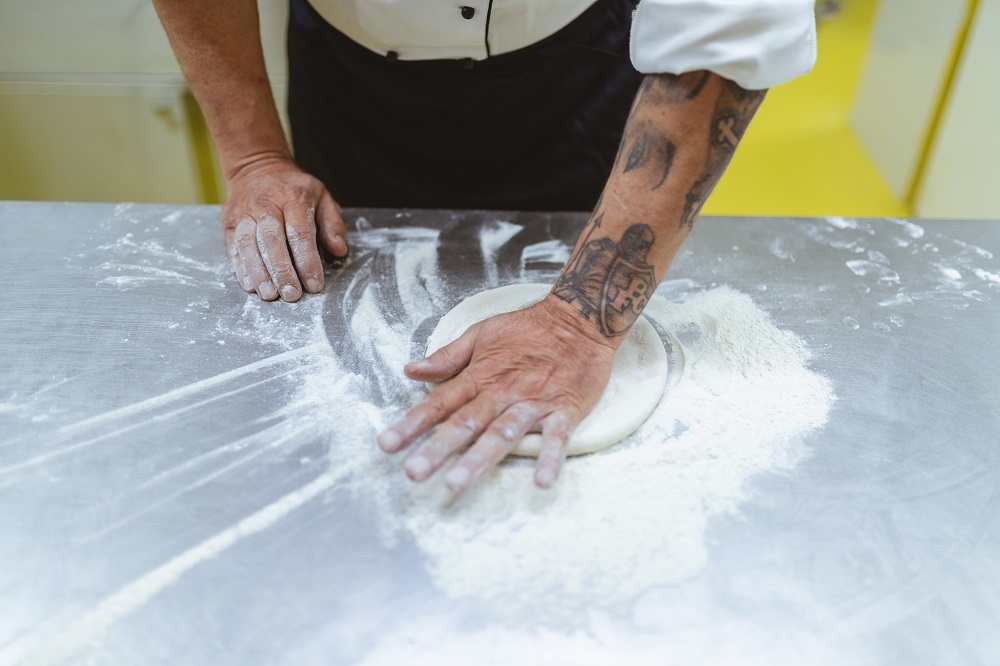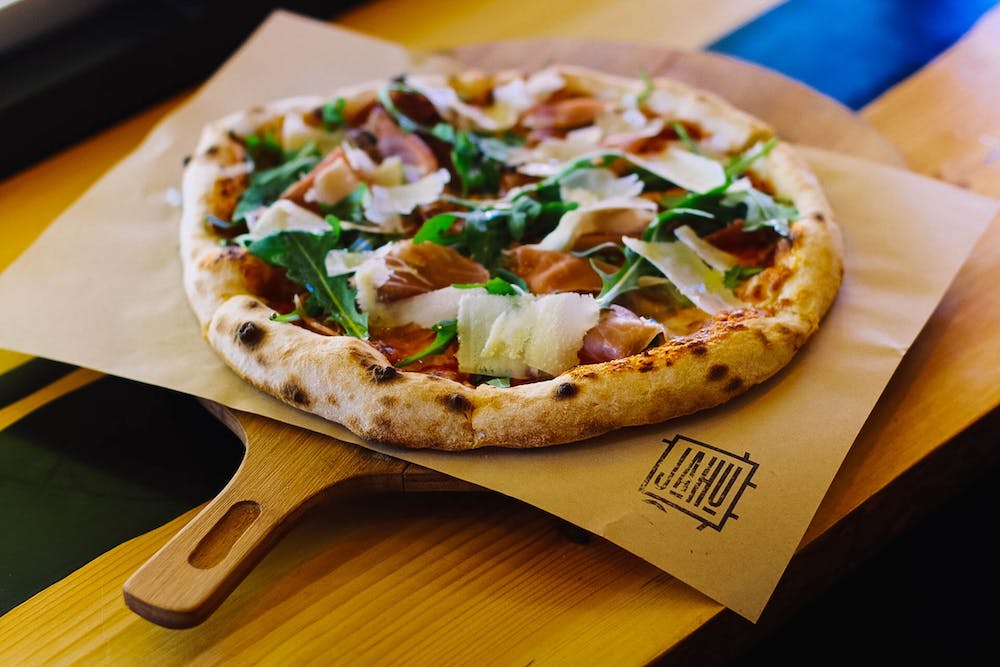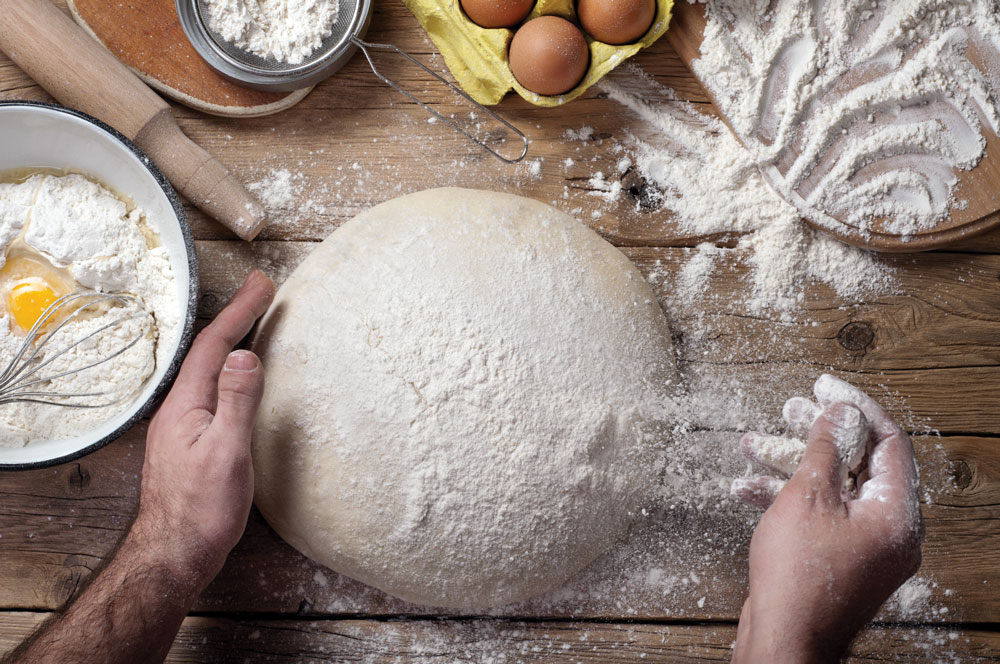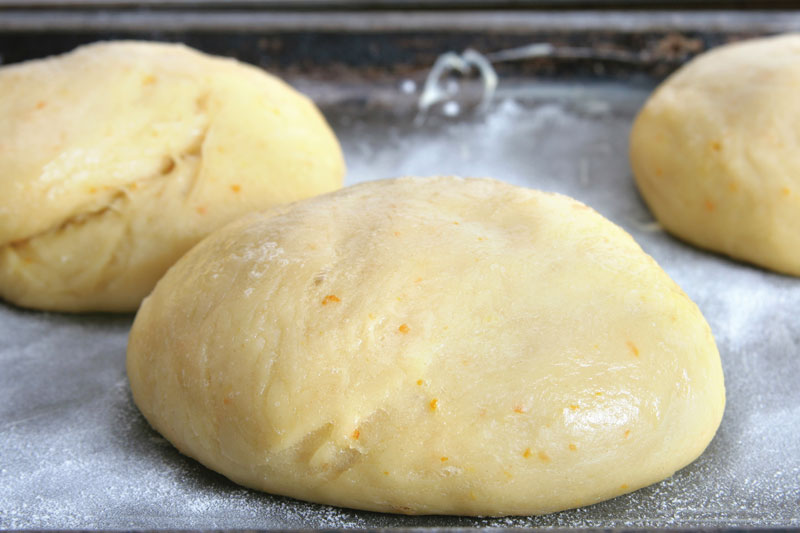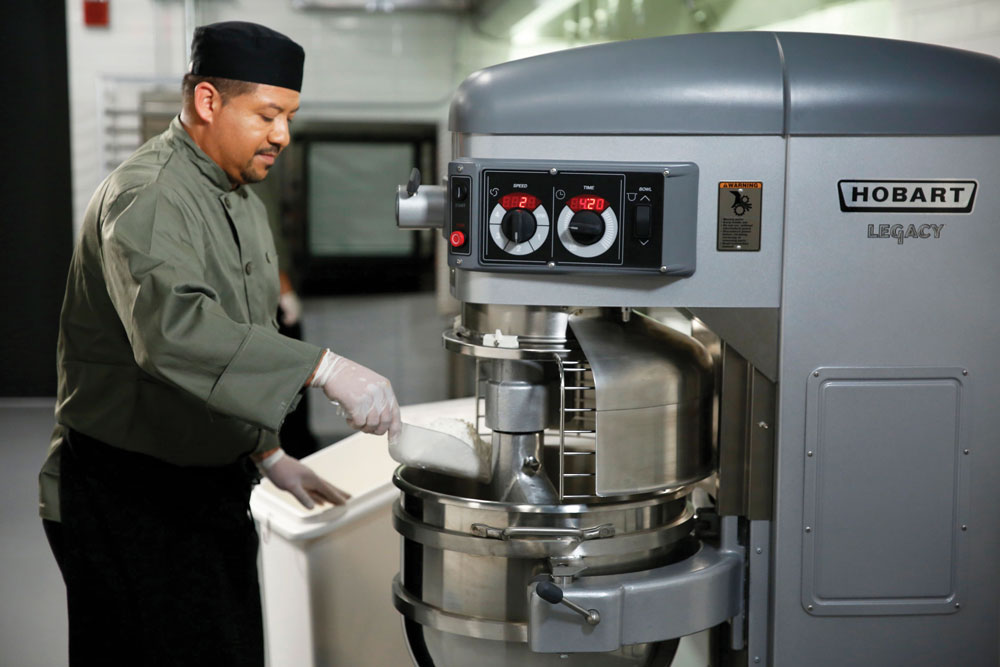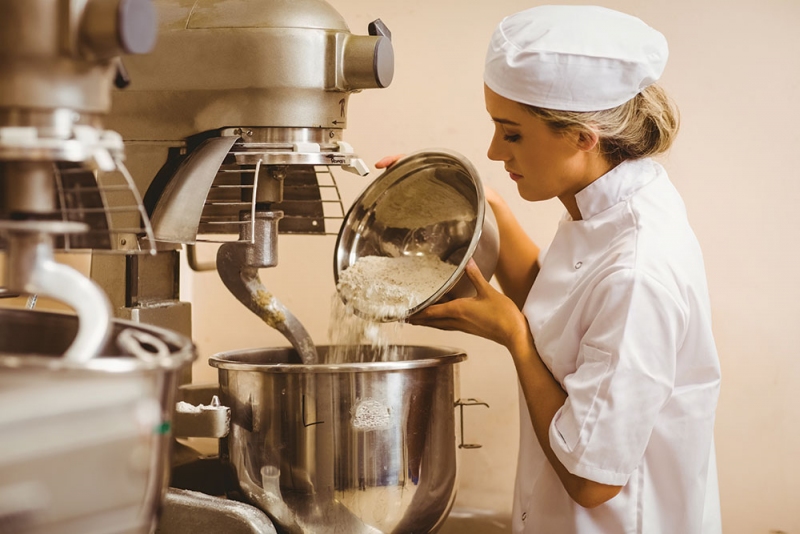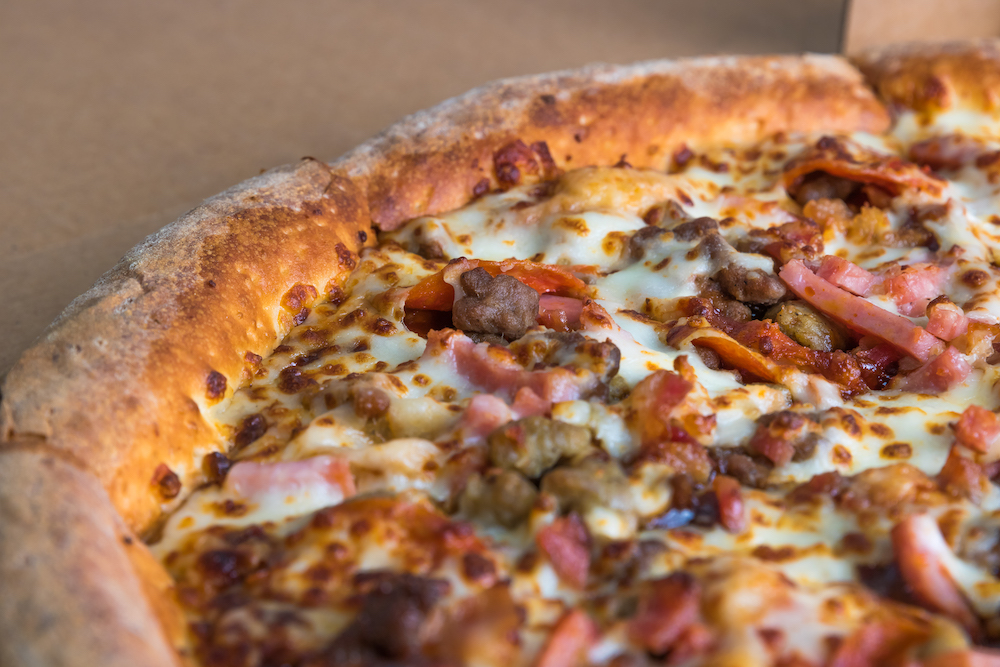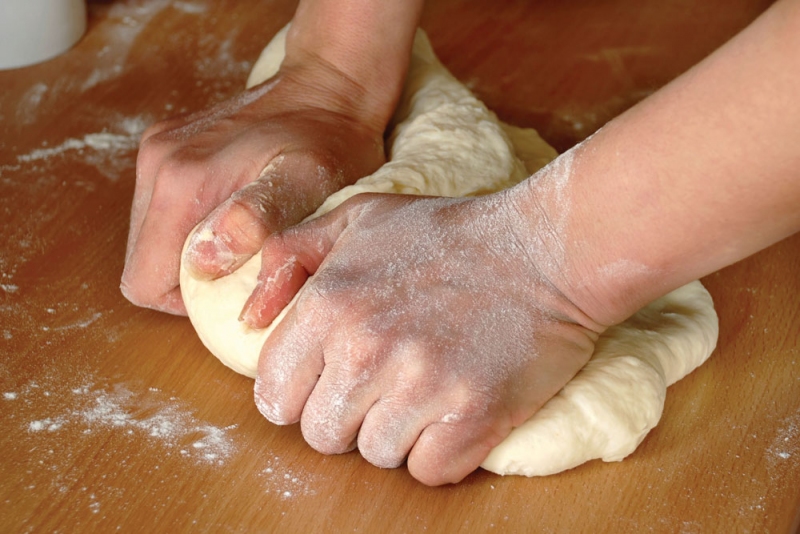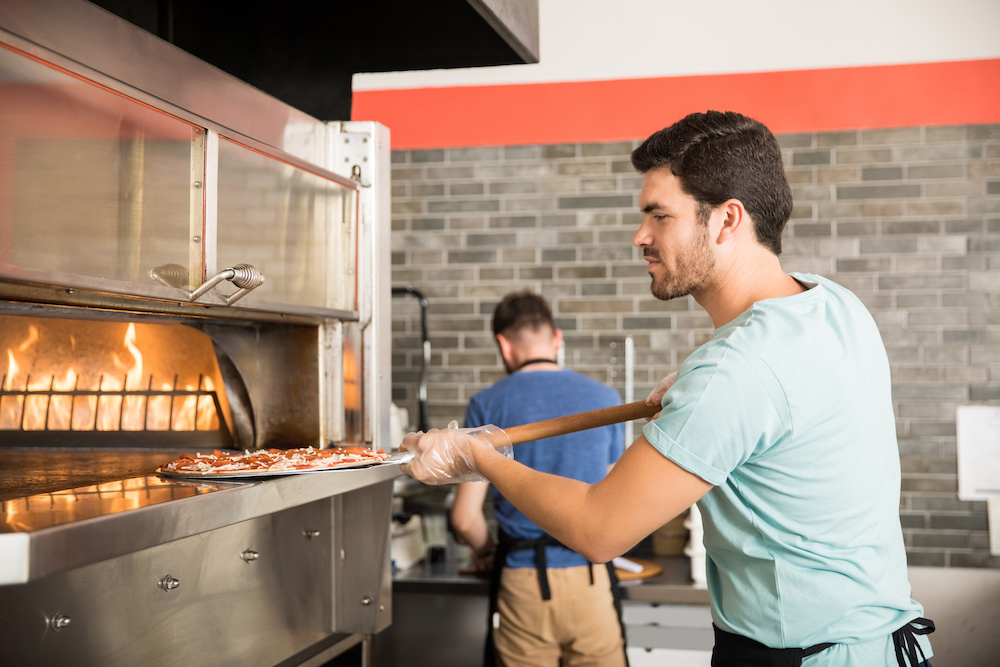QUESTION: We are trying to make a New York style pizza, but we have yet to be able to achieve the chewy texture. We have tried mixing the dough more and less, but to no effect. We have even tried increasing and decreasing the amount of water we add to the dough, but to no effect. What do we need to do?
ANSWER: The answer to this question is not in mixing or dough absorption, but rather in flour selection. The protein content of the flour that you elect to use will determine the textural properties of your finished pizza. By changing to a stronger flour, or by adding between two and four percent vital wheat gluten (available through any bakery ingredients distributor) to the formula, you should be able to achieve the desired chewy texture in the finished crust. For making this type of crust you want to use a very strong "pizza" flour. I would also recommend that you adjust the yeast level to between 0.75 and 1.00 percent compressed yeast, combined with salt levels of 1.8 to 2.0 percent. The lower yeast level will provide for less fermentation to the dough, resulting in a tougher eating characteristic. The slightly higher salt level will act to control the yeast activity, enhance flavor and toughen the finished crust.
QUESTION: I am producing a take and bake pizza and I want the crust to develop a darker color during baking. I've tried adding sugar to my recipe, but I don't like the sweet taste I get. What else can I do?
ANSWER: There are a couple of things that you can do to get your crust to color up more during baking, without imparting a sweet taste to the crust. You could add some whole egg to the recipe. By adding about 5 percent of whole egg, based upon the flour weight, you will have a crust that will brown more easily, especially in a home type oven, and the browning will be a richer color. The only disadvantage to this approach is the cost of the whole eggs. Another thing that you can do is to add some bakery grade, nonfat dry milk solids to the recipe. This will also give you a deep, reddish brown crust color. Again, the disadvantage is in its cost. At a cost of about $1.00 per pound, and use levels ot three to five percent (flour basis) it has a significant cost. The third and probably the best option is to add some sweet dairy whey to your recipe. Whey is a by-product of cheese manufacturing. It is high in lactose (milk sugar). As such, it contributes little in the way of flavor since lactose has a very low sweetness rating. The lactose is also non-fermentable by baker's yeast so it won't be fermented away like sugar is and its low cost make it attractive to use for this application. I would suggest that you consider adding between three and five percent whey to your present dough recipe to improve its browning properties in a home type oven.
QUESTION: I have been told that if we use a brewer's yeast in our pizza dough recipe that we will obtain a stronger, more beer-like flavor in our dough. Is this true, and how much do I need to use?
ANSWER: This question keeps coming up from time to time. There is no difference in the flavor imparted by brewer's yeast as compared to baker's yeast. The two yeasts are very similar, with the main difference being that the brewer's yeast has a tolerance to about 1 percent more alcohol than the baker's yeast does. This has little significance to anyone who isn't fermenting to produce alcohol. If you are wanting to improve the flavor of your crust, and are looking for what some people refer to as a more "yeasty" flavor, all you really need to do is to increase the yeast level, though be careful that you don't exceed much more than about 2 percent yeast on a compressed yeast basis. If you do, you might end up with a dough having the flavor that you want, but at the same time is generating so much CO2 that blisters and bubbles become a major problem. The better approach is to allow the dough to ferment for a longer period of time before using it. This gives the finished crust the desired flavor characteristics without the problems associated with higher yeast levels.
QUESTION: I have attended many of your seminars and read many of your articles and you always recommend the use of plastic dough dockers. What's wrong with the metal dockers that we have?
ANSWER: There is nothing "wrong" with the metal dockers, that is IF they are used properly. When the dough is docked on the baking pan, especially one with an anodize finish, the heavy-handed use of a metal docker can damage the finish on the pan. Now go out and explain that to all of your employees and enforce it on a busy Friday night! If you are docking the dough on the bench top or on an oven peel, not a problem.
The plastic dockers are just much more pan friendly, even with heavy-handed use, and with the high cost of pans I like to keep them around in good condition as long as possible. As a side benefit to the plastic dockers, some of them have a very large, flat footprint, which really works well to control bubbles. Remember, the dough docker works something like a stapler or spot welder. It sticks the dough together in many places, which helps to control the blister/bubble formation. The larger the footprint of the docking surface, the stronger and more effective the docking point is. A great place to easily see the effectiveness of dough docking is on a saltine or club cracker. If you look carefully, you can actually see the thin web of dough in the docking holes. This is the top and bottom of the dough that has been pressed together (docked) to keep the cracker from turning into something that would otherwise more closely resemble a mini, crispy pita bread.



